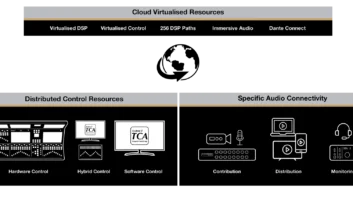
Global demand for content has never been greater. The challenge for broadcasters is how to keep up with ever-increasing demand given the high cost of quality content production and a highly competitive market. Increasingly, broadcasters are turning to new solutions to keep audiences engaged, and there is a growing realisation that content publishers are sitting on a bank of potential content with high value that can be leveraged through cloud archiving.
There has never been a better time for broadcasters to make use of their archive content. Cloud-based storage has become almost synonymous with savings, security, and efficiency, but the technology has far more to offer when applied to content strategies.
The role of metadata enhancement
Metadata is one of the keys for broadcasters looking to leverage their content libraries. The cloud’s computing capabilities deliver a long-term ROI as a means to keep content up-to-date and future-proof video libraries. The use cases for metadata enhancements range from simple but valuable additions such as text transcripts created from audio content, to advanced applications such as highly specific details, such as a particular weather event to particular individuals.
With rich metadata and ubiquitous cloud storage, it’s possible to make archive video available and discoverable, to suit changing content strategies. The cloud can make content more accessible to remote production teams than on-prem storage, so content owners have an additional incentive for adopting cloud-based solutions with gains both to cost-efficiency and expanded capabilities. The alternative is for content to remain siloed within an on-prem library, which results in an opportunity cost and a competitive disadvantage. In contrast, cloud resources may create a level playing field for smaller broadcasters, who may not have the resources to afford a robust on-prem storage solution but can leverage the effect of cloud capabilities to put them at an advantage.
The growing need for disaster recovery
An additional benefit of cloud storage with significant business implications is disaster recovery (DR). Outages are a perennial issue for broadcasters, and the consequences can lead to serious reputational harm, particularly in the case of time-sensitive content, such as a live sports match or a severe weather warning. Audience loyalty is an intangible but crucial factor in any business model. With a robust DR system in place, your hard-won customer loyalty is protected from the effects of an outage. Cloud data centres are accessible for both content storage and playout in multiple regions and are a safety net for content publishers who may have to contend with situations ranging from extreme weather to a ransomware attack.
Collaboration in the cloud
The ubiquitous nature of cloud data storage is beneficial for DR security, but it also provides access for distributed creative teams. Cloud-based editing tools are an essential component in the collaborative process of modern video production. Since location-independent work is now widely established within the industry, high levels of flexibility at the level of content production are a necessity to keep up with modern ways of working. Production teams can perform at their best when they have full access to log, edit, collaborate, and publish videos from anywhere.
A scalable solution
There are many features of cloud storage that give broadcasters a competitive edge, although the cloud’s unmatched scalability may be the deciding factor for many businesses. Business agility in the form of dynamic scaling is something that on-prem systems can’t offer. Cloud systems can dynamically scale for changing user counts and data volumes – which allows firms to buy exactly the level of resources they need at any given time, in turn enabling their operating expenses and usage to be more optimally matched.
Although long-term gains to scalability are one of the strongest reasons in favour of the cloud, there may be inertia from content owners concerned about its initial cost of investment. However, a workaround for the initial costs can be achieved by working with a third party to leverage economies of scale. To achieve this, a third-party provider pays for storage which is then pooled across a group of broadcasters using the service. The result is that each customer has its own secure directory and, by leveraging the buying power of the entire customer base, can access the full advantages of cloud storage without the cost of going to a cloud provider directly.
Staying ahead of the curve
Having overcome the initial hurdle of transitioning to the cloud, broadcasters can manage operations with reliability and unlimited scalability. The nature of a cloud-based business model is highly adaptive, from changing scales of operations to meeting highly specific demands for content. The cloud is a system that facilitates an extremely wide range of customer needs and use cases. Given the fast pace of change within the broadcast industry, the cloud’s scalability is the best possible solution with a long-term view of staying ahead within a market that continues to change at such a fast pace. Gains in agility are the make-or-break factor in an industry that is defined by rapid and continual transformation. That’s why cloud storage is fast becoming the most indispensable tool for content publishers on any scale.







